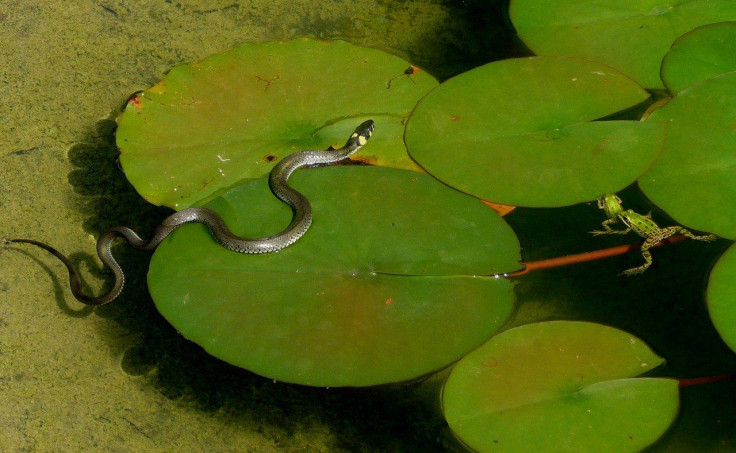Snake Diversity Suffers When Frogs Die Off, Study Finds

KEY POINTS
- In 2004, a global pandemic caused a massive amphibian die off
- Researchers looked at years of data from before and after the die off
- The die off evidently led to a dramatic decline in snake species, making them less diverse
- The study shows the ripple effects that arise from losing species
Losing a species is not just bad for that particular species, but for the others that rely on it as well. In a new study, researchers show how a global pandemic that greatly affected amphibians proved to be bad news for the snake community as well.
Catastrophe For Amphibians
Scientists have been documenting the global loss of frogs and other amphibians since 1998. In 2004, an outbreak caused by the invasive fungal pathogen Batrachochytrium dendrobatidis, commonly known as chytrid, led to the catastrophic loss of amphibians worldwide, including a remote forest in Panama. In fact, because of the pandemic, over 500 amphibian species significantly declined, with 90 of which completely going extinct.
Such extinctions often affect the other species in the ecosystem, such as the snakes that rely on the frogs and their eggs for sustenance. However, the actual effect of the pandemic on the snakes has mostly been conjectures because they are quite difficult to study in the wild.
To see how the snake community was affected by the widespread amphibian loss, researchers from the University of Maryland and Michigan State University looked at seven years of survey data from a national park near El Copé, Panama before the amphibian die-off occurred as well as six years of survey data from the same after area the retrogress.
Snake Population Decline
The researchers noted a significant shift in the snake population, particularly when it comes to diversity and health.
“The community became more homogeneous. The number of species declined, with many species going down in their occurrence rates, while a few species increased,” study co-author Karen Lips of the University of Maryland said. “Body condition of many snakes was also worse right after the frog decline. Many were thinner, and it looked like they were starving.”
Although the researchers cannot specifically pinpoint how many of the snake species declined because the cryptic nature of snakes makes sightings rare, what they did notice is that nearly half of the snakes commonly observed before the die off significantly declined in occurrence rates after it.
Simply put, the amphibian die off led to the reduction of the snakes’ food source, causing a decline in snake species apart from a few that were “winning.” As a result, the snake community ended up with fewer species, making the snake population in the area more homogenous.
Given that the area that the researchers studied is a protected national park where impacts from factors such as development, habitat loss or pollution are limited, the researchers are rather confident that the changes in the diversity and condition of the snakes are likely due to the amphibian die off.
Biodiversity Loss Affects Other Taxa
What the researchers found shows how the loss of certain species can greatly affect the others around it. Furthermore, the study emphasizes why it is important for people to take note of the species that we are losing because of the “invisible” ripple effects.
“The demise of the snake community after amphibian loss demonstrates the repercussive and often unnoticed consequences of the biodiversity crisis and calls attention to the invisible declines of rare and data-deficient species,” the researchers wrote.
The study is published in the journal Science.
© Copyright IBTimes 2025. All rights reserved.






















